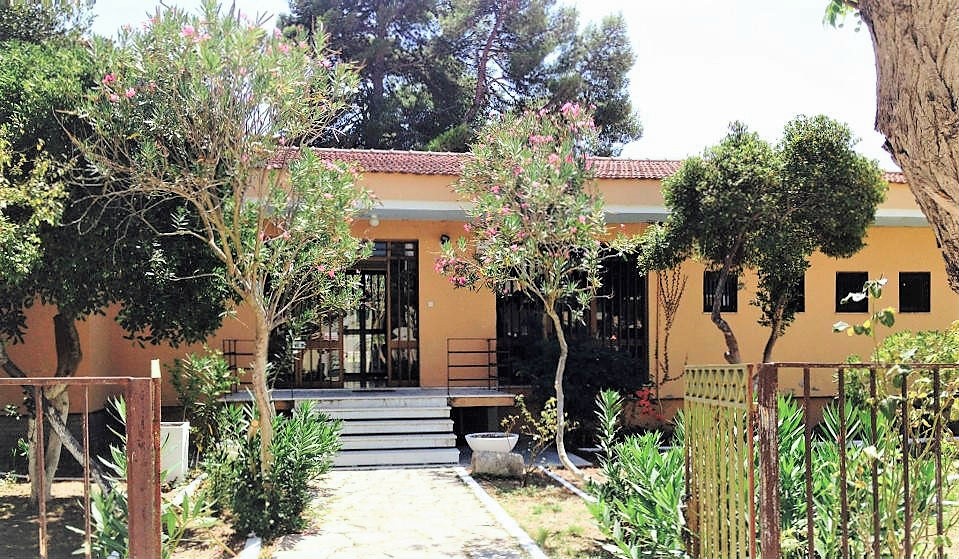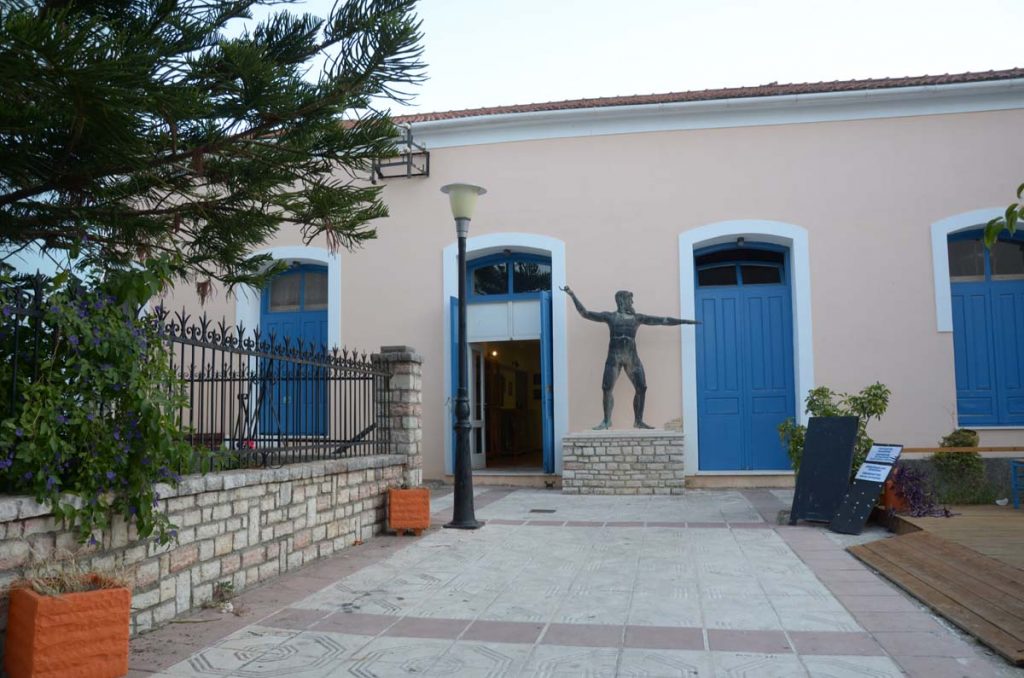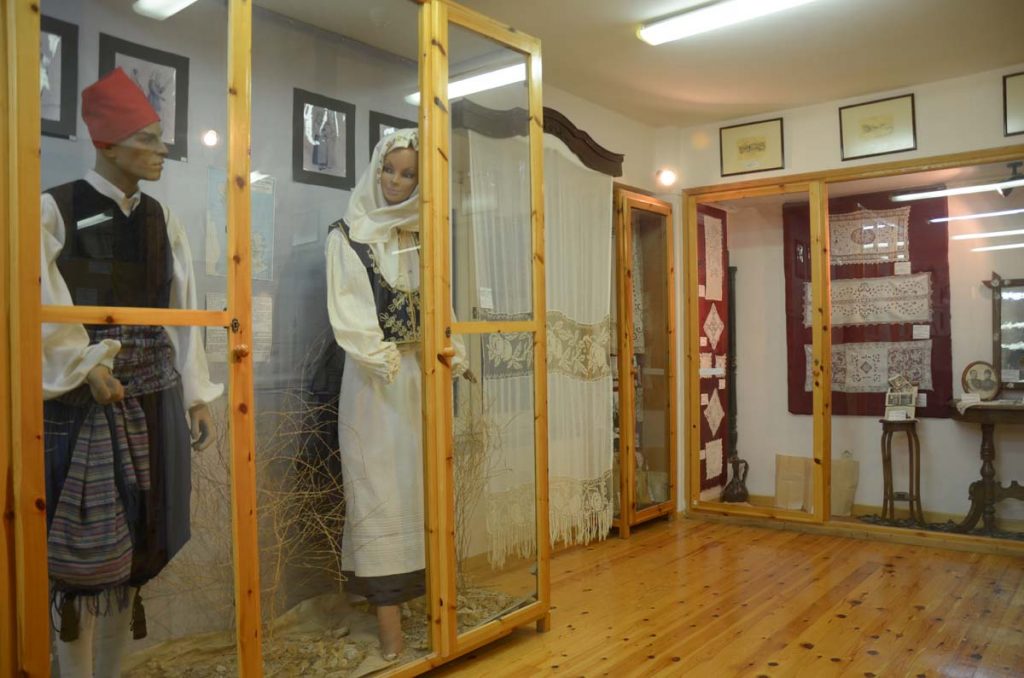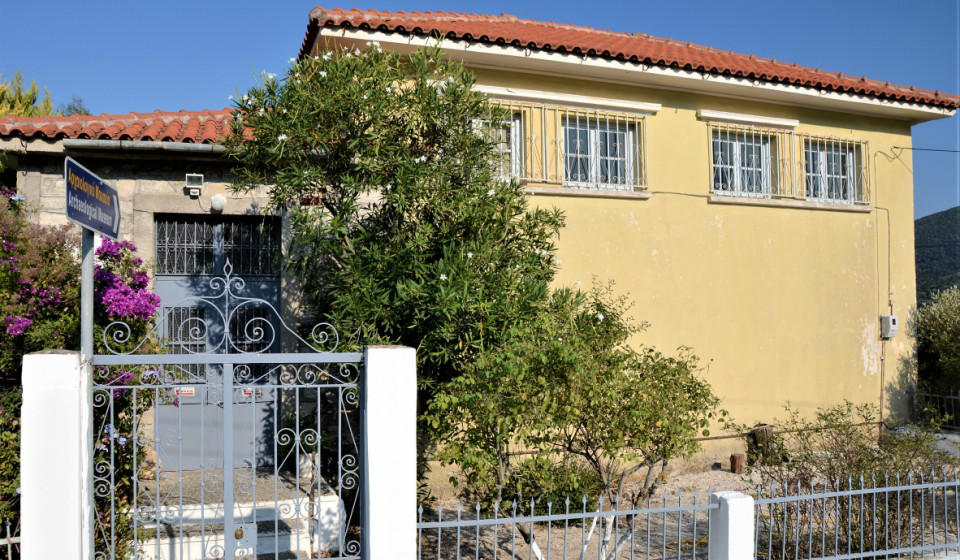Museums
The Archaeological Museum of Vathy
This museum hosts exhibits collected from the southern part of the island in the main hall with only a few items from the north. The museum was built in 1960 in the distinctive architectural style of that era.
Visitors to the museum are able to view findings from the Mycenaean through to the Roman period in the building which has, in addition to its reception area, three other chambers.


A Simple Guide
The entrance hall is decorated with columns from uncovered tombs. In the first hall the museum displays clay pots that date from the pre-geometric and geometric periods (1000-700 B.C.) and a good number of these have been made in Ithaca. In addition, there is a collection of copper and ivory decorated objects that were used for votive offerings or everyday utensils.
The second hall is home to exhibits of findings from the 7th century B.C., which include clay pots made locally as well as from overseas. There is also a number of decorated clay pots used in ritual services. A notable exhibit is the collection of fragments from a 7th century B.C. utensil which was used to serve wine. On this is the oldest identified inscription which makes reference to friendship and hospitality written in the dactylic hexameter, characteristic of Homer.
The final, third chamber displays exhibits which are from different periods and locations. A small number of these were uncovered during excavations in the north of the island at the turn of the 20th century. One item that stands out is a microscopic copper bust of a bearded man with conical headwear who must be identified as Odysseus along with a sign from the 6th century B.C. with the inscribed names of the goddesses Athena and Hera.
There is also an interesting collection from the temple of the Nymphs, at Marmarospilia, and silver and bronze Ithacan coins on which we can make out the image of Ulysses and the notation ’Ithakon’. A final important exhibit in hall three is a marble roman bust, of the early period, which is presented as it was found in Vathy.

The Folklore and Nautical Museum of Ithaca
The museum is situated where the old electricity generating plant was originally built. The energy producing unit was gifted to the island by G. K. Drakoulis and operated from 1923 till 1967 supplying electricity to Vathy and Perachori. The museum opened its doors to the public in 1997 with a rich and varied collection of exhibits, donated by Ithacans, with the purpose of preserving the island’s cultural heritage.
The ground floor hosts an exhibition of artefacts highlighting the centuries old nautical tradition of Ithaca: paintings and photographs of Ithacan-owned merchant ships, nautical instruments, naval uniforms, documents and manuscripts from the Stathatos School of Merchant Marine and Nautical education. In addition, a visitor can view original work tools used in the exercise of a variety of occupations; examples of ecclesiastical artwork; samples of local costumes and of agricultural tools, musical instruments and of embroidery. Alongside these is a collection of gramophones which were donated by N. Raftopoulos, an Ithacan migrant to Australia.


Much of a whole floor is dedicated to recreating what a traditional Ithacan home might look like. We can see examples of domestic furniture, items of everyday usage, clothes and jewellery which come together to give us a picture of how different social groups on the island lived their lives. Other exhibits on this floor include a weaving loom, The Municipality’s Art Collection and a selection of bronze engravings by J. H. W. Tischbein of Homeric characters which have been donated by the Centre for Odyssean Studies.
The whole exhibition area was upgraded and redesigned in 2012 and the Folklore and Nautical Museum of Ithaca is now rightly regarded as one of the finest folklore museums in the country. Every visitor is guaranteed a fascinating journey into the life of everyday Ithacans who lived between the 18th and 20th centuries!
The Stavros Archaeological Collection
This collection, made up of findings from the Stavros area, is housed in a small, one room building on Pilikata hill which was built in the 1930s. The exhibits here date from the early Bronze Age (3000 B.C.) through to the Roman Age. They have been sourced from four sites: Pilikata hill, Stavros village, Loizos’ cave and Treis Lagkades.
The museum houses pottery vessels and stone tools from the settlement of the early Bronze Age at Pilikata, pottery vessels from the Mycenaean settlement at Treis Lagkades and grave goods and offerings from classical and Hellenistic tombs in the village of Stavros.


Very significant findings have been made in Loizos’ cave and these cover the period from the Mycenaean through to the Roman Ages. This is a rich collection but the most impressive and significant exhibit has to be the fragments of the bronze geometric tripod with its elaborate decoration. There is also the piece of a Hellenistic mask upon which is engraved ‘EYXHN ODYSSEI’ or ‘“Pray to Odysseus”.
This reference to Odysseus is evidence that this particular cave was a place of worship to the King Odysseus and, by extension, so was the whole of Ithaca. The fragments from the bronze tripod reference directly to the passage in Homer’s Odyssey, where the Phaeacians gave a gift of thirteen such bronze tripods to Odysseus. (The Odyssey v.14,v.135-6,v.217-8 and Θ110-117).






